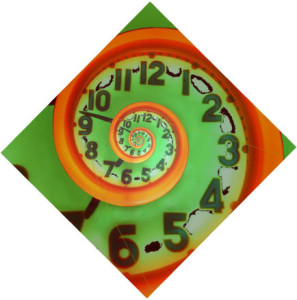 Kinds of Work Time
Kinds of Work Time
I have been having a dialogue with Dorian Taylor. He suggested that manager time – where you take meetings by the hour – can eat into maker time for those who need long sessions of focus time. It has really got me thinking about the different kinds of activities and the optimal environments for each. Then today John Hagel posted an article on engineering serendipity. Huh, that isn’t the work of either manager time nor maker time, explicitly. So I want to consider it here with you.
Time Chunks
I know one of the ways I end up delaying a task is when I know I am going to have to dedicate two or more hours to wrapping my head around all the parts and then sorting them out and chunking it down into pieces to be accomplished. This is my maker time. I am a project manager by nature, or so my Kolbe test told me. So, if given a large project and a big chunk of focus time, I will organize all the actions required, by whom, and when. It is a bit compulsive. For me it has the pleasure of solving a complex puzzle. To get into a flow state doing it though, I need a chunk of time where no one calls, the computer doesn’t ping, and I don’t have appointments for several hours.
 Interruptions
Interruptions
A few years ago, my friend Steve pointed out studies on interruptions and productivity. Gloria Mark at Irvine revealed that it can take a shockingly long time, perhaps 25 minutes, once interrupted, to get back on task for these kinds of efforts. (Can depend of course on type of interruption and task.) Ah ha. So this is why I am delaying working on something I am really good at and makes me flow! I can’t stand how it gets messed up and extended by interruptions. And if interruptions come at half hour intervals, I won’t get far. So I am getting better at guarding that kind of time engagement.
Meeting Time
Which might be easier to do if the work that I did in the world didn’t also involve manager time. Up to a third of my time goes to meeting with clients, colleagues, and connections. And given that my work life includes collaborators around the globe, I often feel pressure to schedule those meetings whenever all the parties might possibly be free. For example, with ci2iglobal, we have collaborators in Chicago, Chaing Mai, Paris, and Buenos Aires, so we have to meet when all of us are awake. So how can I organize my balance of maker time which requires long tracks of flow states with the manager time of meetings sporadically placed in my schedule?
Serendipity Time
And now this article John posted about engineering serendipity. Neither the manager time nor the maker time seem to include this serendipity factor. And yet from years of conversations with Steve about Bell Labs and Valdis Krebs about social network analysis, I hear how powerful serendipity is to a network and to innovation. Steve has told me that Bell Labs, renowned for innovation, was phenomenal at catalyzing serendipity. The main campus had winding labyrinths of hallways with chalkboards everywhere, so as you got lost moving around you could bump into someone and start up a conversation. And the culture of the place encouraged time to be used this way.
Engineering for Serendipity Time
So how do we engineer for serendipity? Changing the architecture of your space might not be under consideration. And if you are a free agent (aka consultant) the space to consider is not your home office. First, you have to make time in the schedule to allow for it. And stop calling it social networking time and just collect business cards like the count of them makes a difference. It doesn’t. The quality of connection matters most. Reflecting on the best serendipity time I have had or hear about, I think it goes something like this:
- Drop the mentality of busyness. If you are too busy, you won’t have a random encounter nor give it enough time to develop.
- Seek out social events and social places where you will mingle with people who are on the periphery of your network or areas of interest.
- Playing with the people who are at the core of your work is good for reinforcing what you do and know. Useful. Important. But, serendipity happens best with people who are a little strange to you. As Valdis often says, “connect on your similarities and profit from your differences.” So find ways to mingle with people who are a bit different than you. That is where you will discover something new.
- By social spaces, I mean public or pseudo public places like cafes and atriums. And don’t sit there bent over a screen. Head up. Use it for some mindfulness time. Note your surroundings and the experience you are having in this moment. Breathe. Wonder. This gives an opening for people to connect with you – it is like putting a sign on your forehead that says, “I am open to connection and making time to explore.”
- Cultivate a culture of serendipity. Spread stories in your networks of successful serendipitous encounters in your network or outside of it. A dash of awe on that can be just the right spice to make it juicy enough to pass along.
- The article on engineering serendipity points to the work of Burt on Structural Holes. It suggests, “Rather than wait for their employees to cross paths, they could simply make the necessary introductions.” Yes, and, a good introduction needs to set a spark. You can’t just say, “you two can bridge a structural hole – go at it.” Say, “I would like the two of you to take the rest of the afternoon to work on some knowledge sharing. Come back later and tell me what your overlaps are and what you might be able to learn from each other. A map would be most helpful. And don’t contain it to work we are doing right now.” That gives the two people something to focus attention on. When they come back, ask them to circle on the map the things they feel passionate about and see if it evolves from there.
3 Kinds of Time and 2 Factors to Consider
Okay, so we have some ways to engineer serendipity. And I pointed to these three different kinds of time engagement that require very different approaches to time. The combination of these activities and how much time goes toward each of them depends very much on two factors: you role and your stage. Maybe your job is to manage, so maker time is a small portion of what you do. Or maybe your role is a programmer and you need the majority of time to be maker time. Maybe your job is to develop innovation, so your core activity focuses on serendipity. What is the right balance of these three kinds of time for what you do? And then, what stage of a project are you on? Early phases of innovation require a lot of serendipitous time where later stages need more maker time. And somewhere in the middle needs to be some manager time to gather the resources to keep moving.
Use your favorite method of graphically representing your effort and map out the right balance for your role and the change in that over time.

Recent Comments